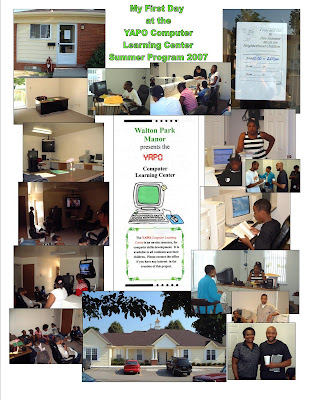U.S. Innovative Teachers Forum
September 27-28, 2007
Rewarding 21st century learning teams
The 2007 U.S. Innovative Teachers Forum will recognize and reward learning teams practicing the elements of 21st century learning in their own professional learning and then incorporating these skills into the student learning environment.
The 2007 Forum, supported by the National Staff Development Council and the National Commission on Teaching and America's Future, will bring together exemplary K-12 learning teams for two days, September 27-28, 2007, on the Microsoft corporate campus in Redmond, Washington.
The Forum will provide learning teams with the opportunity to share expertise and engage collaboratively with their peers from around the country.
Apply for your learning team to have a chance to attend the 2007 U.S. Innovative Teachers Forum. Applications must be submitted using the online form by midnight Pacific time, July 11, 2007.
Focusing on teaming and the elements of 21st century learning
The flattening forces driving change at an exponential rate have redefined the necessary skills required to be successful in the 21st century. In order for today's students to acquire these skills and be competitive in a still-evolving global economy, learning environments within schools must become seamless and emulate the characteristics and behaviors of the outside world. Furthermore, a learning environment which is conducive to enabling students to acquire 21st century skills must not only exist for the students but also for the educators tasked with preparing the students, as they themselves must be well versed in and practicing these skills as professionals. Given the norm in U.S. education where teachers are working alone in isolated classrooms, (behavior attributed to our factory-era schools), how are educators expected to acquire these skills, let alone infuse them into their teaching and learning with their students?
Microsoft, the National Staff Development Council, and the National Commission on Teaching and America's Future support the growing consensus that teaching, even good teaching, is better when teachers have the support of their colleagues and opportunities for continual reflection, inquiry, problem solving and learning together. Groups of teachers engaged in this kind of work on a regular basis are the learning communities that make good schools great and enable sustained professional growth for educators in the 21st century.
About the 2007 U.S. Innovative Teachers Forum
An independent panel of nationally recognized education leaders will select up to 25 learning teams, based on team applications, to participate in the Forum. Up to three teachers plus a principal or vice-principal from each team will be invited to attend the Forum. The Forum will be held on the Microsoft corporate campus in Redmond, Washington, September 27-28, 2007.
Following the U.S. Forum, a subset of attendees will be selected to represent the United States at the Microsoft Worldwide Innovative Teachers Forum in Finland in November 2007.
Each learning team will be reviewed on the following criteria which demonstrate learning teams practicing the elements of 21st century learning in their own professional learning and then incorporating these skills into the student learning environment:
| Application Criteria | Weight | ||||||||||||||||
21st Century Learning Teams Part I: About the Team | 5 points | ||||||||||||||||
21st Century Learning Teams Part II: Goals and Team Time
| 10 points | ||||||||||||||||
21st Century Learning Teams Part III: Teamwork in Action
| 20 points | ||||||||||||||||
21st Century Learning Teams Part IV: Team Success
| 15 points | ||||||||||||||||
Implementing 21st Century Projects Part I: Project overview | 5 points | ||||||||||||||||
Implementing 21st Century Projects Part II: Project Development
| 20 points | ||||||||||||||||
Implementing 21st Century Projects Part III: Project Implementation
| 10 points | ||||||||||||||||
Implementing 21st Century Projects Part IV: Project Results
| 10 points | ||||||||||||||||
Implementing 21st Century Projects Part V: Project Artifacts
| 5 points | ||||||||||||||||
Total Value | 100 points |
Applications will be accepted through midnight Pacific Time, July 11, 2007. Learning teams selected to attend the 2007 U.S. Innovative Teachers Forum will be notified by August 15, 2007.
If you have questions about the Forum, please send e-mail to teachers@microsoft.com.













